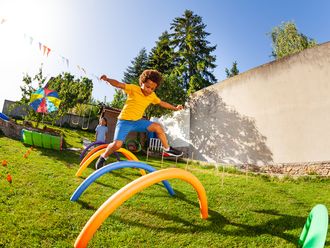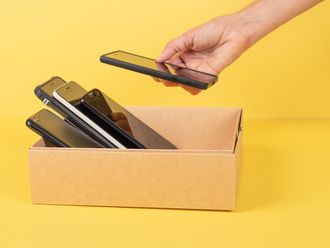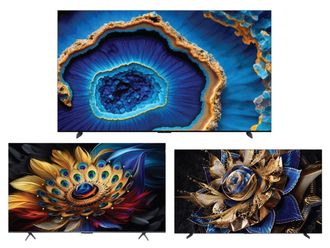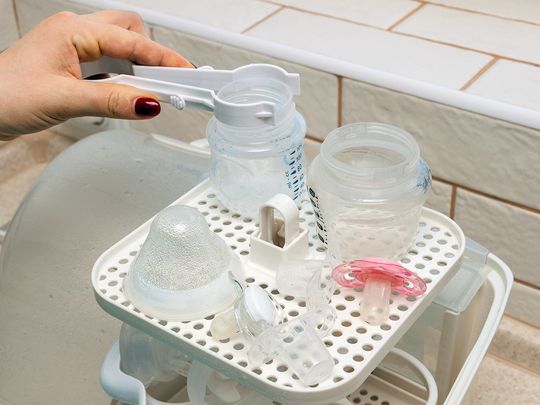
For the first four months of a baby's life, disinfection should play a huge role. Feeding bottles come in direct contact with your little one's mouth, which makes it fairly easy for the baby to contract infections. Since sterilisation is going to be a daily practice in the early months, an automatic tool will be a boon for the expecting parent.
Do I need to sterilise baby bottles?
'A thorough wash with soap and hot water should do it' could be a common line of reasoning, but experts warn otherwise. In the face of stubborn bacteria and fungi, proper disinfection is crucial for your newborn's health.
Dr Abeer Al Khalafawi, a consultant paediatrician with Medcare Women and Children Hospital, explains: "It's very important to sterilise baby bottles for the first four months of life. This is because a baby's immune system is not yet mature and is prone to viral bacterial or fungal infections. Sterilising ensures that [the baby doesn't contract] infections, especially gastroenteritis, early in life, which can affect the baby severly."
Baby bottles can also become a breeding ground for bacteria when milk is left at room temperature, adds Dr Khalafawi.
Which sterilisation method is the most effective?
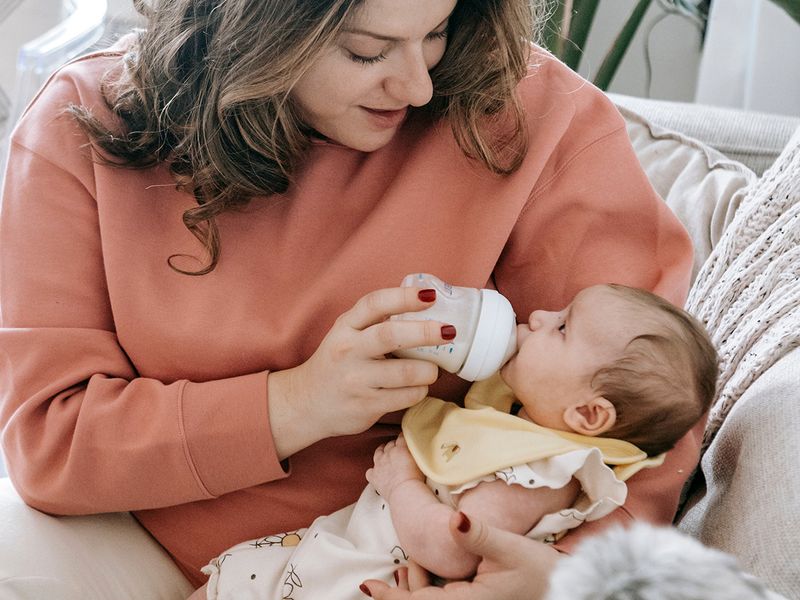
Feeding equipment can be disinfected in several ways. Baby bottles can be steamed in electric or microwave sterilisers, submerged in a chemical solution or boiled manually in a pot.
According to Dr Al Khalafawi, there's no 'best' method, as it depends on the parent's convenience, but there is a least preferred tool. "Before any sterilisation method, the bottle and its parts should be separated first, including the teat, and cleaned well. I advise electric sterilisers and the boiling method, but I don't approve of microwave sterilisation for baby bottles, though some mothers do like it," she added.
Here is a quick rundown of what you can expect with each method:
- Boiling method: Our expert suggests adding equal parts vinegar to a pot of boiling water and plunging all washed parts in for five minutes. Remove when cooled.
- Electric sterilising: "Wash the bottle, separate the parts and place it upside down in the steriliser. It takes 10 minutes, after which you have to leave the parts inside the device for some time," said Dr Al Khalafawi.
- Chemical sterilising: This method uses a sterilisation solution compressed into tablets and mixed in water. The sanitisation process should not take more than 30 minutes.
- Microwave sterilising: If you're employing this quick cordless method, Dr Al Khalafawi cautions against any metal parts, which should be removed beforehand.
How often should I sterilise feeding equipment?
A parent's disinfection duty starts the moment they purchase a baby bottle. Dr Khalafawi explained: "We should sterilise when we buy the bottle, and it's not been used yet. And then, for four months, sterilisation should be done after each use or each feed. After the age of four months, you can reduce it to once a day until the age of one."
Besides feeding times, certain cases also warrant a thorough sterilisation. "If milk has been left inside the bottle overnight or if the bottle falls on the ground, you have to sterilise it again. We suggest that the mum buys many spare bottles for this reason," added Dr Khalafawi.
Another common mistake to avoid is shaking the feeding bottle by blocking the teat with a finger, as this can render the disinfection futile. Our expert advises using the cap that comes with the baby bottle, instead, to shake the milk well.
Find your options below for automatic and non-electric sterilisers that kill harmful bacteria and sometimes even dry your baby's equipment just in time. We've picked out the best-rated kits on Amazon, vouched by mums and dads like yourself. Get a Prime membership to get free, fast delivery.
1. Best Overall: Philips Avent Premium Bottle Steriliser and Dryer
Pros
- Sterilises and dries completely in 40 minutes
- Large capacity for six bottles, teats, breast pump and more
- Keeps contents sterile for up to 24 hours
- Easy to clean, even the hot plate is removable
Cons
- Limescale build-up on the heating plate
- Drying process can be loud
The Philips Avent premium steriliser takes care of everything, from disinfecting the bottles to drying all the parts within a 40-minute cycle. In just under an hour, mums and dads can get ready for the baby's next feed. It's a steam-powered kit, meaning it's gentle and chemical-free, but strong enough to annihilate 99.9 per cent of harmful germs. The steriliser has a capacity of up to six Philips Avent baby bottles, and it can also fit pacifiers, a manual breast pump and other essentials. You can run a full cycle, complete with filtered air drying or leave the contents inside and get up to 24 hours of sterile, ready-to-use bottles by just keeping the lid on. Reviewers pick this up to save time as it cuts down the drying process significantly. Whatever parts that need sterilising are always available, even in the middle of the night. They do add that the heating plate can collect limescale quickly, but this is easily rectified by cleaning it with vinegar.
2. Best Large Capacity: Papablic Baby Bottle Electric Steam Steriliser and Dryer
Pros
- Spacious 11-bottle capacity
- Sterilises, dries and extra dries, if needed
- Keeps contents sterile for 12 hours
- Modular design helps save space
Cons
- Needs a transformer to convert the 110/120V appliance voltage
- Might not have enough capacity for accessories
For more than one baby, you'll need an even roomier steamer to accommodate multiple spare bottles. The Papablic steriliser can load up to 11 bottles and accessories in three configurations, so the tall basket for bottles can be removed to steam smaller teethers and pacifiers in the accessory tray. Like the Philips Avent machine, the steriliser can dry everything without long wait times. The dial control offers three functions: sterilising, drying and extra drying, where a standard sterilise and dry cycle will last 45 minutes. Growing families in the reviews swear by the kit after using it daily for years. It dries the contents well with little noise, but the accessory tray could be less spacious for some items.
3. Best Microwave Steriliser: Chicco Microwave Steriliser
Pros
- Doesn't need power but a functioning microwave oven
- Sterilises with natural steam
- Fits up to five bottles and accessories
- Convenient for travelling
- Keeps contents sterile for 24 hours
Cons
- Drying needs to be done manually
While microwave kits aren't ideal, they're a fantastic back-up to have during travel. As long as you have access to water and a microwave oven, this Chicco kit is ready for use without cables. The steriliser fits up to five bottles, pacifiers and teats, and disinfects the contents using natural steam in just a few minutes. An included tweezer ensures safe handling of the sterile items. With the lid closed, you get up to 24 hours of protection guaranteed. Parents say that it's helpful on trips, as it fits into compact 20-litre microwave ovens as well. The only convenient function that's missing is the drying, which can take longer than the intial eight-minute steaming process.
4. Best with HEPA Filter: Tommee Tippee Advanced Electric Steam Steriliser Dryer
Pros
- Fits six feeding bottles, accessories and breast pump
- More flexibility with sterilise-only and dry-only options
- 40-minute sterlising and drying cycle
- HEPA air filter
Cons
- Can leave behind a bit of moisture
- HEPA filter needs replacement every six months
Parents who are fans of Tommee Tippee can look into its electric steriliser and dryer. It has a six-bottle capacity plus miscellaneous accessories and a breast pump, and comes with three functions. You can choose to either sterilise only for 10 minutes, dry only for 30 minutes or save time by combining both into one 40-minute cycle. One great aspect of this kit is that it uses a HEPA (high-efficiency particulate air) filter to clean the air that dries your bottles, so the feeding equipment is free of dust and dirt particles always. Since the steriliser can store disinfected items for up to 24 hours, mums and dads can leave the machine running before bed and have everything ready in the morning. Buyers note that the upper compartment is roomy and fits several smaller accessories. It does dry noisier than the steaming; however, it's not a cause for disturbance. Some also add that it leaves a bit of moisture behind after the cycle.
5. Best for Sterilising Quickly: Nuk Micro Express Plus Microwave Baby Bottle Steriliser
Pros
- Four slots for bottles and their accessories
- Keeps contents sterile for up to 24 hours
- Secure lid
- Does the job in four minutes
Cons
- Drying needs to be done manually
- Smaller capacity than the Chicco kit
Another travel-friendly option, the Nuk microwave steriliser promises to kill 99.9 per cent of germs within four minutes. There are dedicated slots for four wide-neck bottles and small accessories, and the steriliser keeps the contents clean for up to 24 hours with the lid closed. All you need to do is pour 200ml of water into the base of the kit for sufficient steam making and slip it into the microwave oven for four to seven minutes. It fits inside small microwave ovens well, say reviews, and they also prefer its secure sealing feature, which involves aligning markings on the lid.
Our recommendations are independently chosen by Gulf News editors. If you decide to shop through links on our website, we may earn an affiliate commission, as we are part of Amazon Services LLC Associates Program.


